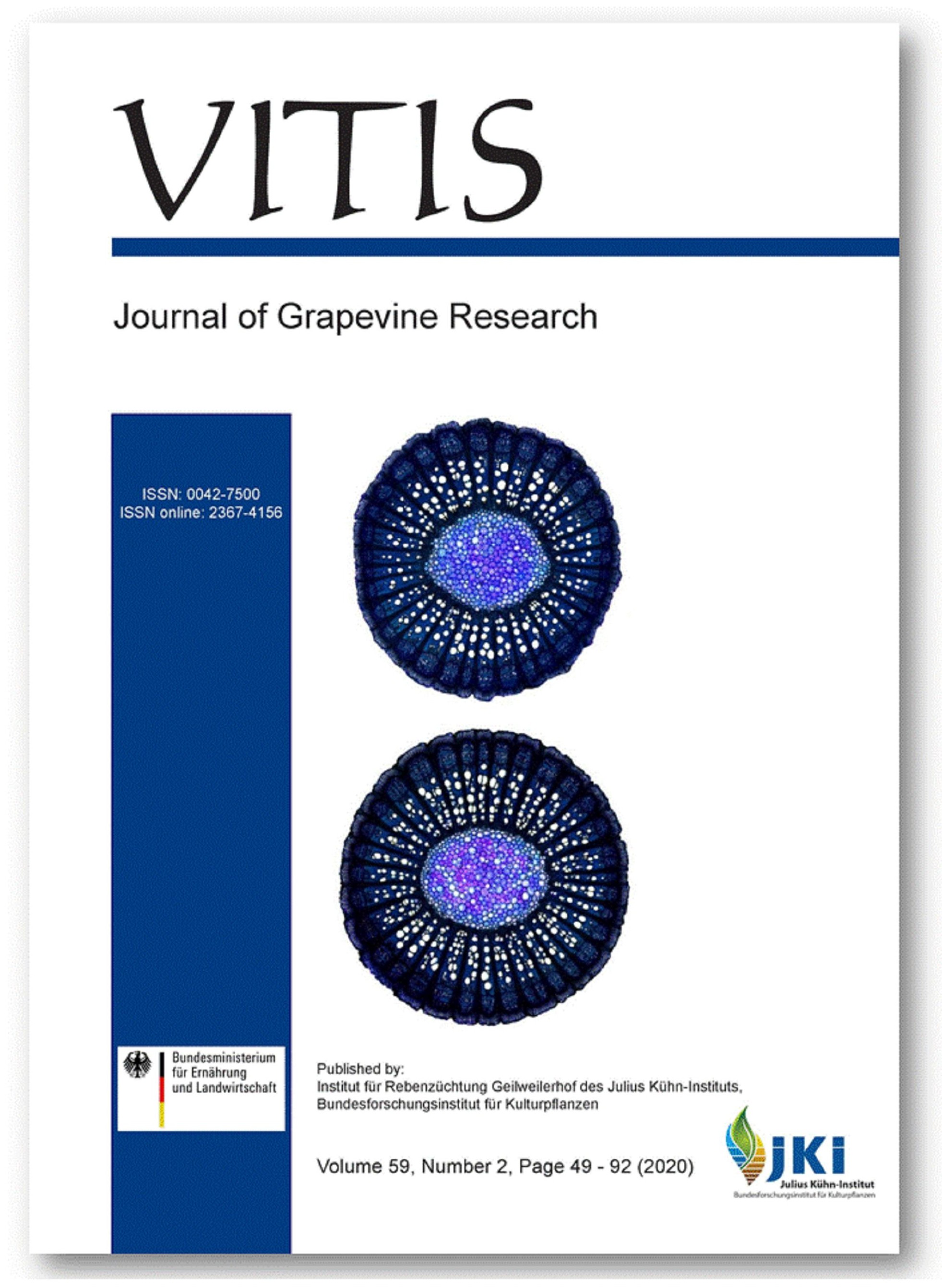Influence of grape juice extraction methods on basic analytical parameters
DOI:
https://doi.org/10.5073/vitis.2020.59.77-83Keywords:
grapevine; berry; maturation; must.Abstract
Currently, for monitoring the ripening of grape berries, different devices are used to produce the juices to be analysed. Crushing the berries is a key step that determines the quantity of juice extracted and may impact it composition. The effect of different devices on analytical parameters of the musts produced were compared in this study. Samples from four grape varieties ('Cabernet-Sauvignon', 'Ekigaïna', 'Marselan' and 'Vermentino'), showing a variability of berry size and precocity, were crushed using six different devices (ASieves, Bag mixer®, Crusher, Manual, TPress and Blender). Whatever the pressing equipment, sugar concentrations of the must were not modified by the extraction method, unlike other parameters. pH and titratable acidity were slightly impacted by the crushing method without changing the ranking of the varieties. However, potassium concentrations were more impacted by the pressing method. Differences in mechanical forces applied to skins and seeds according to the pressing equipment used may release more or less potassium. This study clearly discarded a complete grinding of the samples for grape ripening monitoring: this method strongly modified the potassium content and, consequently, the pH and the titratable acidity of the musts.
Downloads
Published
Issue
Section
License
The content of VITIS is published under a Creative Commons Attribution 4.0 license. Any user is free to share and adapt (remix, transform, build upon) the content as long as the original publication is attributed (authors, title, year, journal, issue, pages) and any changes to the original are clearly labeled. We do not prohibit or charge a fee for reuse of published content. The use of general descriptive names, trade names, trademarks, and so forth in any publication herein, even if not specifically indicated, does not imply that these names are not protected by the relevant laws and regulations. The submitting author agrees to these terms on behalf of all co-authors when submitting a manuscript. Please be aware that this license cannot be revoked. All authors retain the copyright on their work and are able to enter into separate, additional contractual arrangements.



